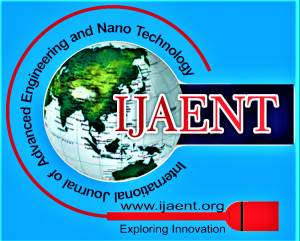![]()
Study the Effect of Molarity on the Synthesis Nanoparticles by Liquid-Phase Laser Ablation Technique
Suha I. Al-Nassar
Suha I. Al-Nassar, Department of Communication Engineering, College of Engineering, Diyala University, Iraq.
Manuscript received on May 02, 2015. | Revised Manuscript received on May 09, 2015. | Manuscript published on May 31, 2015. | PP: 7-10 | Volume-2 Issue-6, May 2015. | Retrieval Number: F0292052615
Open Access | Ethics and Policies | Cite
© The Authors. Published By: Blue Eyes Intelligence Engineering and Sciences Publication (BEIESP). This is an open access article under the CC BY-NC-ND license (http://creativecommons.org/licenses/by-nc-nd/4.0/)
Abstract: This work was focused on the studying the effect of molarity on the producing ZnO nanoparticles by Liquid –Phase Pulsed Laser Ablation (LP-PLA) of Zn metal plate in the aqueous environment of cetyl trimethyl ammonium bromide (CTAB) using femtosecond laser (Ti-Sapharie has wavelength= 800 nm, rep. rate= 1K Hz, Pulse duration =130 fs and laser energy pulse 0.5 mJ. The effect of molarity on the optical and structure of ZnO was studied is characterized by UV-visible absorption. UV-visible absorption spectrum has three peaks at 220, 210 ,204 nm for different values of molarity (10-2, 10-3 and 10-4) respectively, our results show that UV–visible spectra show a blue shift with decrease the molarity of CTAB solution because this leads to decrease the concentration of ZnO NPs and decreases the the aggregate of surfactant molecules dispersed in liquid collide ,and blue shift indicated to get smaller size of nanoparticles. The blue shift in the absorption edge indicates the quantum confinement property of nanoparticles. Also FTIR transmittance spectra of ZnO2 nanoparticles prepared in these states show a characteristic ZnO absorption at 435–455cm−1 .
Keywords: Ablation time, CTAB solution, pulsed laser ablation technique, Zinc oxide nanoparticles.
